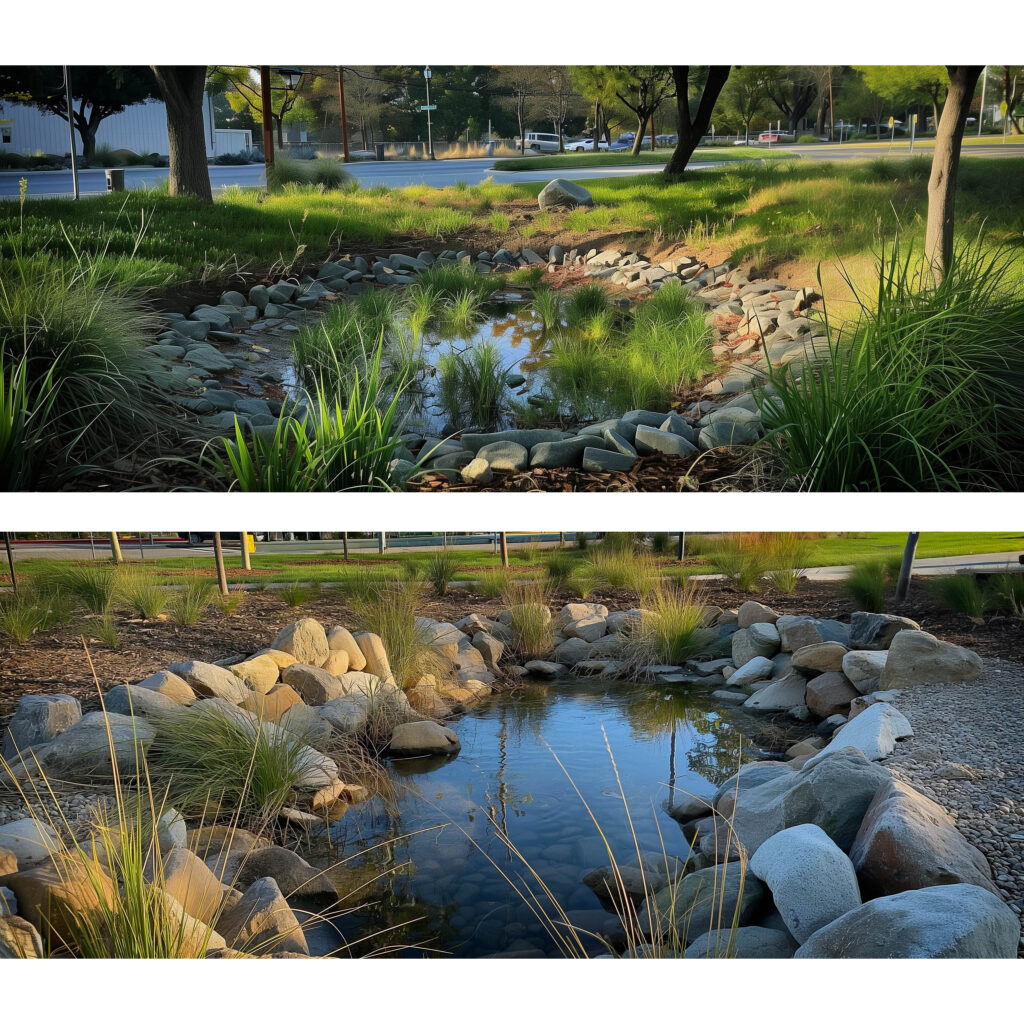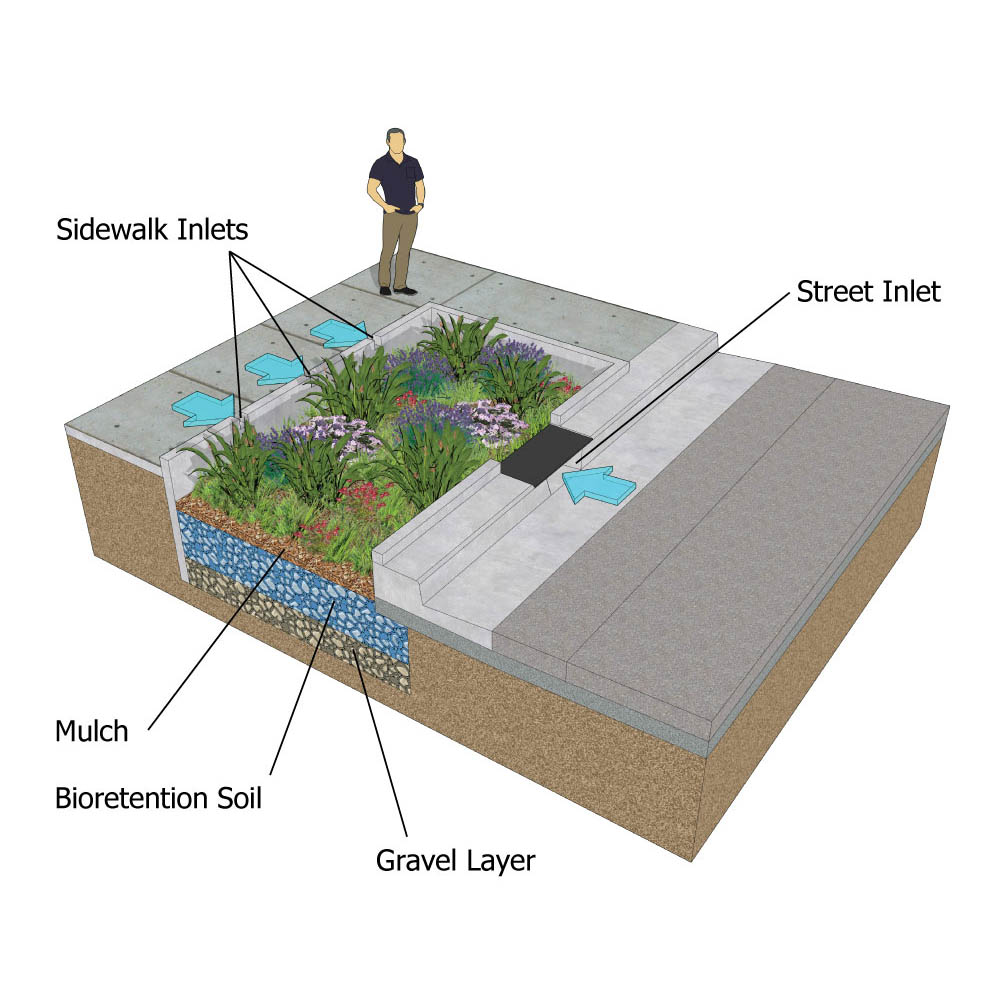Infiltration Facilities
Treatment BMPs
Tree Box Filters
Tree box filters are concrete containers with vegetation and filter media. Runoff typically enters the tree box through a curb cut opening or pipe. Tree box filters pretreat flows by capturing, immobilizing, and decomposing pollutants and nutrients, which are incorporated into the vegetation system.
Vegetated Swales
A vegetated swale is an engineered, shallow, landscaped depression with compost-amended soils and native vegetation. They are designed to capture urban runoff, temporarily store, settle, and filter out pollutants and sediment from lawns, rooftops, roads, parking lots, driveways, and sidewalks. Vegetated swales are very similar to bioretention basins/swales.
Sewer Diversions
Finding the Right Solution
The Master Plan will help the City identify and create projects that make meaningful impacts on the community. The right combination of these tested and effective systems will improve water quality and retention within the City. Water is a valuable resource and it should be handled responsibly. By planning out how to best capture and clean the water, the City also reduces flooding and pollution of our environment. A well-organized Stormwater Master Plan improves the world where we live, work, and play.








